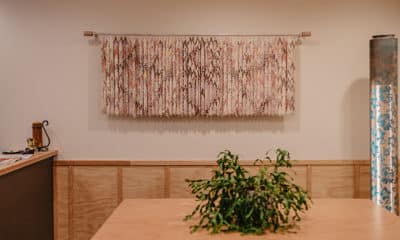IN AN INDUSTRY where we’re navigating variable after variable, most of us aren’t trying to add yet another to the mix. We’re constantly combing through the plethora of machinery, software, ink, and substrate options and it can feel overwhelming. There’s a lot riding on us to figure out the right combination. Sometimes, though, finding the perfect solution involves more innovation on our part, as PSPs. It’s not enough to take vendor options as the be-all and end-all. We have to ask the tough questions and that can mean customizing variables outside our area of expertise.
When it comes to understanding the intricacies of the textile industry, it doesn’t take long to figure out you’ve got to wade through a litany of variables just to properly discuss one fabric type. In conversations with other PSPs, I’ve started to hear the same story over and over again. Due to a low comfort level or lack of familiarity, many PSPs heavily rely on their fabric vendor’s expertise in their decision-making processes.
Don’t get me wrong, building the right relationship with your textile vendors is crucial. In fact, their understanding of your process and how their fabrics perform in your workflow and print environment can make all the difference. However, what I’d like you to think about is how your value and experience as a PSP can inform your textile selection process. Don’t simply accept the options in front of you, there’s room for your ideas and innovation, too. In fact, we need that type of conversation.
Having worked in textile development for digital printing, I know all too well that this is a quickly evolving market sector. My experience has also made me keenly aware of how important it is to look at printing projects from as aerial of a view as possible. Your input and conversation with your vendor could lead to the creation of something completely new.
I’m not here to encourage you to reinvent the wheel (though, if you’re up for that challenge, have at it!), but rather to encourage you to ask for spec’d out fabric or at least question what you’re printing on. This doesn’t have to be a drastic inquisition. If you’ve identified a gap in the market, don’t be afraid to bring it up.
Recently, I worked on a hospitality project that required fabric with inherent flame repel (IFR) yarn. We showed our client a bunch of options but they were fixated on a residential fabric that didn’t meet the durability requirements or flame repel characteristics that a fabric developed for commercial projects would. We took this insight to develop something new.
Advertisement
(On the note of retrofitting or quick fixes, I can’t possibly underscore how potentially dangerous this can be. It can be tempting to spray on some special coatings, even flame repel ones, but fabrics with spray coatings lack longevity and could easily pave the way for lawsuits.)
In the end, through collaboration, we developed a fabric that met the client’s needs. It wasn’t just a case of developing something custom for a client; the interest for this fabric has since skyrocketed. Without our client’s input or our partnership with our textile vendor, this wouldn’t have been possible.
Make your project work for you by building the right relationship with your textile vendor and by collaborating in the textile manufacturing process. You may just have the key ingredient.

 VEHICLE WRAPS + GRAPHICS3 weeks ago
VEHICLE WRAPS + GRAPHICS3 weeks ago
 Press Releases3 weeks ago
Press Releases3 weeks ago
 Case Studies3 weeks ago
Case Studies3 weeks ago
 Case Studies1 week ago
Case Studies1 week ago
 Benchmarks3 weeks ago
Benchmarks3 weeks ago
 Press Releases2 months ago
Press Releases2 months ago
 Press Releases3 weeks ago
Press Releases3 weeks ago
 Press Releases2 months ago
Press Releases2 months ago


















